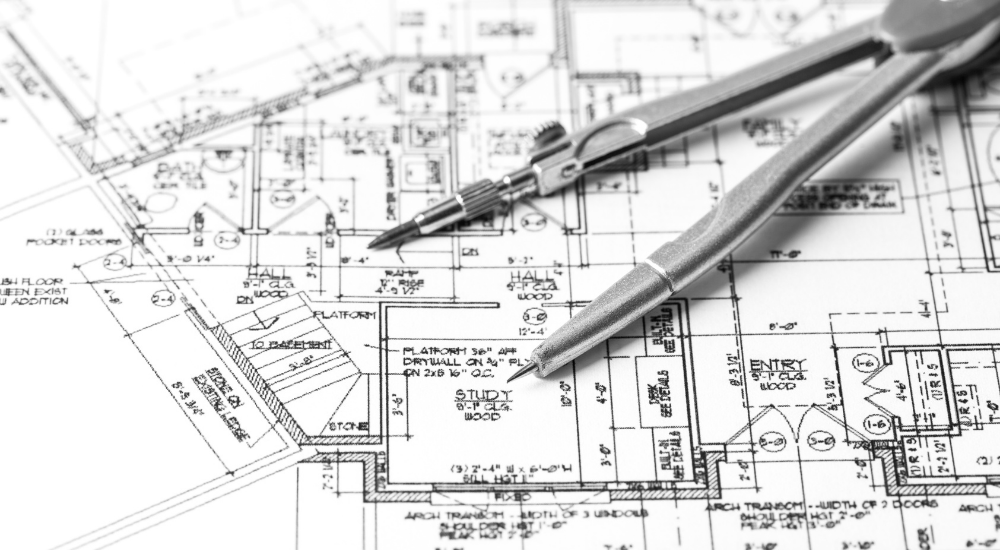Architect Guide to Eco-Friendly Building Materials
Architect Guide to Eco-Friendly Building Materials
Blog Article
Understanding the Diverse Occupation Paths Available for Aspiring Architect
As an aspiring Architect, you have a globe of career paths waiting for you. Whether you're attracted to conventional architecture or the nuances of lasting layout, there's a niche that aligns with your interests.
Typical Architecture: Creating Structures and structures
Conventional style focuses on developing structures and frameworks that blend functionality with aesthetic appeal. As you explore this field, you'll appreciate the detailed equilibrium in between form and function. You'll learn to attract motivation from historical styles, incorporating aspects like symmetry, materials, and craftsmanship. Your styles can reflect cultural heritage, showcasing local traditions while satisfying modern requirements.
You'll create abilities in drafting, model-making, and site evaluation, allowing you to envision and communicate your ideas properly. Involving with customers, you'll require to understand their vision and translate it into practical styles.
Furthermore, developing codes and sustainability techniques are important in your work, ensuring your structures are eco friendly and safe. As you grow in your job, you'll find chances in property, industrial, or perhaps remediation jobs, each offering one-of-a-kind difficulties. Welcoming conventional design leads the way for a meeting job that pays tribute to the past while shaping the future.
Urban Planning: Forming Communities and Public Spaces
As an ambitious Architect, you can play a crucial function as a metropolitan coordinator, transforming just how communities work and interact. By using community interaction techniques, you'll ensure that locals have a voice fit their atmosphere. Plus, integrating lasting style concepts will certainly assist create areas that not only satisfy today's needs however additionally shield the future.
Role of Urban Planners
While lots of could believe of designers as the single dreamers behind buildings, metropolitan planners play an essential duty in forming the wider landscape of communities and public spaces. They analyze land use, zoning regulations, and neighborhood requires to produce sustainable settings that enhance lifestyle. By collaborating with various stakeholders, you'll help make parks, transport systems, and household locations that advertise social communication and availability. Urban organizers also concentrate on ecological considerations, ensuring that advancements integrate eco-friendly spaces and support biodiversity. Your know-how in spatial design and neighborhood characteristics enables you to imagine future growth while protecting social heritage. In this essential function, you'll directly influence just how individuals experience their environments, making every job a chance for favorable change.
Area Interaction Strategies
Effective area engagement methods are essential for urban planners to guarantee that the voices of homeowners are heard and valued in the preparation procedure. To cultivate purposeful dialogue, you must focus on open discussion forums and workshops where area participants can express their concepts and worries. By proactively integrating and paying attention comments, you'll produce spaces that reflect the community's needs, eventually leading to even more effective and sustainable city settings.
Sustainable Design Principles
When creating metropolitan spaces, including lasting design concepts is crucial for creating environments that thrive both environmentally and socially. You must begin by focusing on power efficiency, using products that reduce waste and promote recycling. Take into consideration incorporating environment-friendly rooms, like parks and gardens, to enhance biodiversity and boost air top quality. Advertising walkability and public transport can reduce dependence on cars, fostering a much healthier community.
Designing with water preservation in mind is likewise vital-- think of rainfall yards and absorptive surface areas to take care of stormwater. Involving community members throughout the preparation procedure warranties that the rooms you produce satisfy their needs and encourage social interaction. By accepting these concepts, you'll add to dynamic, lasting city landscapes that benefit everybody.

Landscape Style: Creating Sustainable Outside Settings
As you explore landscape architecture, you'll find necessary style principles that create stunning and practical outdoor areas. Sustainable methods play a vital function in guaranteeing these atmospheres thrive while lessening ecological influence. Plus, you'll find a selection of career chances that permit you to make an actual difference in exactly how people communicate with nature.
Layout Concepts in Landscape
Comprehending design principles in landscape design is vital for producing lasting outside settings that harmonize with nature. You'll require to ponder elements like scale, equilibrium, and percentage to ensure your layouts really feel natural and inviting. Integrating native plants not just enhances biodiversity however likewise decreases water usage, making your landscape resistant. Consider the circulation of room and how individuals communicate with it; pathways and seating locations need to welcome expedition and relaxation. Additionally, pay attention to seasonal modifications, developing with products that complement the environments year-round (Architect). By focusing on sustainability and appearances, you can produce exterior spaces that enrich the community and advertise wellness. Accepting these principles will set a strong structure for your profession in landscape design.
Sustainable Practices Introduction
Lasting techniques in landscape architecture not just concentrate on visual appeals however this hyperlink also focus on eco-friendly health and source conservation. You can develop areas that advertise dirt health, such as practicing and utilizing organic products permaculture principles. Eventually, these practices guarantee your layouts profit both individuals and the atmosphere for years to come.
Job Opportunities Expedition
With a strong foundation in sustainable techniques, landscape design supplies a variety of profession courses that allow you to make a meaningful influence on the environment. You could work as a landscape developer, creating visually pleasing and practical exterior rooms, or specialize in ecological repair, helping to revitalize broken communities. Urban coordinators frequently team up with landscape engineers to develop eco-friendly rooms in urban setups, improving city livability. If you're enthusiastic regarding education and learning, think about coming to be a landscape design instructor, inspiring future generations. In addition, you may collaborate with nonprofits concentrated on environmental sustainability or involve in research study to innovate new methods. Each course not only forms beautiful environments yet also cultivates a much healthier earth for future generations.
Sustainable Layout: Concentrating on Eco-Friendly Practices
As you explore your job in design, embracing eco-friendly methods can establish you apart in a competitive area. Lasting design concentrates on creating structures that decrease environmental impact while boosting owner health. By including renewable products, energy-efficient systems, and sustainable structure strategies, you'll add to a greener future.
Begin by getting expertise of green certifications like LEED or BREEAM, which can strengthen your credentials. Take into consideration how natural light, ventilation, and thermal efficiency can enhance design. Work together with designers and environmental consultants to introduce options that decrease waste and conserve sources.
Don't fail to remember the value of community participation-- appealing neighborhood stakeholders can influence designs that harmonize with the environment. As customers increasingly prioritize sustainability, your proficiency in eco-friendly practices will not just bring in tasks but also satisfy your passion for responsible style. Embrace this vital facet of the career, and watch your occupation prosper.
Historic Preservation: Protecting and Recovering Social Heritage
While you start on your architectural journey, think about the important function of historical preservation in keeping our cultural heritage. This area concentrates on the protection and restoration of considerable buildings, sites, and structures that inform the tales of our past. By engaging in historic preservation, you'll help secure the architectural tradition that forms community identification.
As a historic preservation Architect, you'll analyze historical importance and examine the problem of frameworks. You'll work closely with historians and conservationists to ensure genuine reconstruction techniques are utilized. This occupation course permits you to mix creative thinking with study, allowing you to design options that value original materials and craftsmanship.
Your work not only adds to sustainability by reusing existing buildings yet additionally promotes a feeling of pride within neighborhoods. Welcoming this path will certainly help you come to be a guardian of history, preserving the stories and visual appeals that improve our lives.
Inside Style: Enhancing Indoor Spaces
Historical conservation and indoor style both share a dedication to boosting the constructed atmosphere, however they focus on various aspects. While historic conservation emphasizes keeping a structure's cultural and historic value, indoor style nos in on maximizing interior rooms for capability and aesthetics.
As an ambitious Architect, you'll locate that interior design permits you to blend imagination with technical skills. You'll make spaces that not just look great yet also promote convenience and efficiency. This area entails recognizing just how light, shade, and materials engage within a room, affecting state of mind and use.
You'll service various projects, from domestic homes to industrial offices, ensuring that each atmosphere fulfills the requirements of its residents. By focusing on customer experience, you can transform interiors right into inspiring and functional rooms, making a substantial impact on just how people engage with their surroundings. Welcome the opportunity to improve indoor environments and shape the method people live and function.
Industrial Style: Merging Performance With Aesthetic Appeals
Industrial layout plays a crucial function in developing items that effortlessly mix aesthetics with performance, making sure that what you utilize day-to-day is not only aesthetically appealing yet likewise functional. As an aspiring Architect, you can involve on your own in this area, concentrating on designing everything from furnishings to consumer electronic devices. Your job entails comprehending user requirements, materials, and producing procedures, permitting you to produce innovative options that enhance everyday experiences.
In industrial design, you'll frequently team up with marketers, makers, and engineers, making certain that your layouts are not just attractive however also viable. This career course provides a dynamic environment where creativity fulfills practicality, this page making it a rewarding option for designers interested in forming the products of tomorrow.
Regularly Asked Inquiries
What Educational Accreditations Do I Required to Become an Architect?
To come to be an architect, you'll require an expert level in architecture, typically a Bachelor's or Master's. Additionally, you'll need to finish a teaching fellowship and pass the Architect Registration Assessment to exercise lawfully.
Are There Certification Demands for Various Architectural Profession Paths?
Yes, there're certification needs for different building paths. Architect. You'll need to pass exams, full internships, and often seek specialized training, depending on your picked emphasis, like landscape design, city style, or historical preservation
What Software Abilities Are Necessary for Engineers Today?

Exactly How Can I Gain Practical Experience While Studying Architecture?
You can get sensible experience by interning at architectural firms, joining design competitions, volunteering for area tasks, or teaming up with classmates on real-world projects. These chances boost your skills and develop important connections in the market.
What Work Opportunities Exist Outside Typical Design Firms?
You can explore different task opportunities outside standard design companies, like city preparation, interior style, landscape style, construction management, real estate development, or perhaps functions in sustainability consulting. Each deals one-of-a-kind challenges and benefits.
Whether you're drawn to traditional architecture or the subtleties of lasting layout, there's a specific niche that lines up with your passions.When designing metropolitan areas, including sustainable design concepts is vital for creating environments that thrive both ecologically and socially.As you explore landscape style, you'll uncover vital style concepts that create practical and lovely outdoor rooms.Understanding style concepts in landscape design is necessary for developing sustainable outdoor environments that harmonize with nature.In commercial design, you'll frequently team up with manufacturers, engineers, and marketing experts, making sure that your layouts are not only stunning but additionally feasible.
Report this page